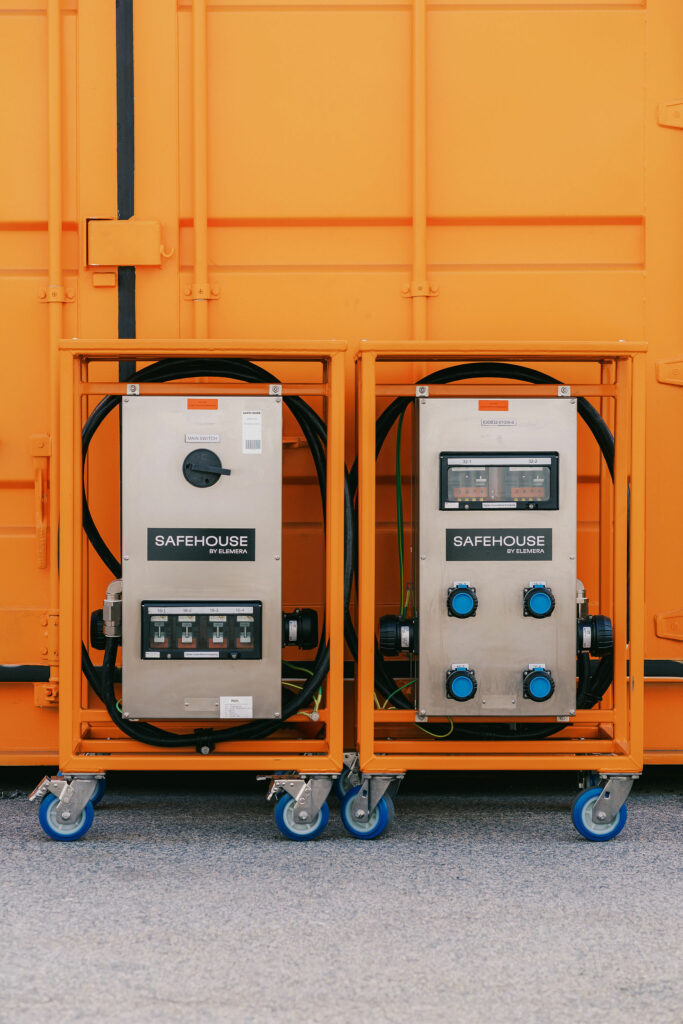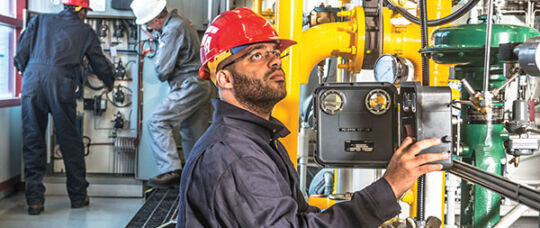Get This Report about Roar Solutions
Get This Report about Roar Solutions
Blog Article
8 Simple Techniques For Roar Solutions
Table of ContentsHow Roar Solutions can Save You Time, Stress, and Money.The 9-Minute Rule for Roar SolutionsRoar Solutions Things To Know Before You Get This
In such an ambience a fire or surge is feasible when 3 fundamental problems are met. This is often referred to as the "harmful location" or "combustion" triangle. In order to safeguard installments from a prospective explosion an approach of evaluating and identifying a potentially dangerous location is needed. The function of this is to guarantee the correct selection and installation of equipment to eventually protect against a surge and to make sure security of life.
(https://www.sooperarticles.com/authors/794854/thomas-carrillo.html)
No equipment needs to be set up where the surface area temperature level of the tools is higher than the ignition temperature level of the given hazard. Below are some common dust harmful and their minimal ignition temperature level. Coal Dirt 380C 225C Polythene 420C (thaws) Methyl Cellulose 420C 320C Starch 460C 435C Flour 490C 340C Sugar 490C 460C Grain Dirt 510C 300C Phenolic Material 530C > 450C Aluminium 590C > 450C PVC 700C > 450C Residue 810C 570C The chance of the threat being existing in a focus high enough to create an ignition will certainly differ from area to area.
In order to classify this danger a setup is separated right into locations of danger relying on the quantity of time the unsafe exists. These areas are referred to as Areas. For gases and vapours and dusts and fibers there are 3 areas. Area 0 Area 20 A hazardous atmosphere is highly most likely to be present and may be present for lengthy periods of time (> 1000 hours each year) or also constantly Zone 1 Area 21 A dangerous atmosphere is feasible however unlikely to be present for extended periods of time (> 10 450 C [842 F] A category of T6 means the minimum ignition temperature level is > 85 C [185 F] Unsafe area electric tools possibly made for use in higher ambient temperature levels. This would suggested on the score plate e.g. EExe II C T3 Ta + 60C( This suggests at 60C ambient T3 will not be exceeded) T1 T1, T2, T3, T4, T5, T6 T2 T2, T3, T4, T5, T6 T3 T3, T4, T5, T6 T4 T4, T5, T6 T5 T5, T6 T6 T6 A T Course score of T1 suggests the optimum surface temperature level produced by the tool at 40 C is 450 C. Presuming the associated T Class and Temperature level score for the devices are appropriate for the area, you can always make use of a tool with an extra strict Department score than required for the area. There isn't a clear response to this concern unfortunately. It actually does depend on the kind of equipment and what fixings need to be lugged out. Devices with particular examination procedures that can't be carried out in the area in order to achieve/maintain 3rd party rating. Need to return to the factory if it is prior to the tools's service. Field Fixing By Authorised Personnel: Challenging testing may not be called for however details procedures might need to be adhered to in order for the devices to maintain its 3rd celebration rating. Authorised workers must be employed to execute the work correctly Fixing must be a like for like substitute. New component need to be considered as a straight replacement requiring no special testing of the devices after the repair is complete. Each tool with a dangerous score must be reviewed independently. These are described at a high degree listed below, yet for even more thorough information, please refer straight to the standards.
Some Of Roar Solutions
The equipment register is a detailed database of tools records that consists of a minimum set of areas to identify each item's area, technological specifications, Ex category, age, and environmental information. This information is essential for monitoring and managing the tools efficiently within unsafe areas. On the other hand, for regular or RBI tasting assessments, the grade will be a mix of In-depth and Close inspections. The proportion of Detailed to Shut inspections will be determined by the Devices Threat, which is evaluated based on ignition threat (the probability of a source of ignition versus the possibility of a flammable environment )and the unsafe location classification
( Zone 0, 1, or 2). This variant will certainly also influence the resourcing demands for job preparation. Once Great deals are specified, you can create sampling plans based upon the sample size of each Great deal, which describes the variety of arbitrary tools items to be checked. To establish the required sample size, two aspects need to be assessed: the size of the Whole lot and the category of examination, which shows the degree of effort that ought to be applied( decreased, regular, or boosted )to the evaluation of the Lot. By integrating the group of examination with the Whole lot dimension, you can after that establish the suitable being rejected requirements for a sample, meaning the allowable variety of damaged things located within that example. For more details on this procedure, please describe the Power Institute Standards. The IEC 60079 basic recommends that the maximum interval in between examinations need to not go beyond three years. EEHA evaluations will also be performed beyond RBI campaigns as component of arranged maintenance and equipment overhauls or repair work. These evaluations can be credited toward the RBI example sizes within the affected Whole lots. EEHA evaluations are conducted to recognize faults in electrical tools. A heavy racking up system is essential, as a solitary item of devices may have numerous faults, each with varying degrees of ignition risk. If the mixed score of both inspections is much less than twice the mistake score, the Whole lot is considered appropriate. If the Great deal is still considered undesirable, it should undergo a complete evaluation or reason, which may set off more stringent inspection methods. Accepted Lot: The reasons of any type of faults are identified. If a common failing setting is discovered, added equipment may call for examination and repair work. Mistakes are classified by seriousness( Safety and security, Integrity, House cleaning ), ensuring that urgent problems are assessed and attended to quickly to mitigate any effect on safety and security or operations. The EEHA database ought to track and tape the lifecycle of mistakes along with the restorative activities taken. Executing a durable Risk-Based Evaluation( RBI )technique is essential for guaranteeing compliance and security in taking care of Electrical Devices in Hazardous Locations( EEHA) (Roar Solutions). Automated Fault Scoring and Lifecycle Management: Effortlessly manage faults and track their lifecycle to enhance evaluation accuracy. The introduction of this support for risk-based evaluation additionally reinforces Inspectivity's placement as a best-in-class remedy for regulatory compliance, in addition to for any kind of asset-centric evaluation usage situation. If you want finding out more, we welcome you to request a demonstration and discover how our remedy can change your EEHA monitoring procedures.
Some Of Roar Solutions

In terms of eruptive danger, a harmful area is a setting in which an explosive atmosphere is existing (or may be anticipated to be present) in amounts that call for unique safety measures for the building and construction, installment and use equipment. electrical refresher course. In this short article we explore the obstacles dealt with in the office, the danger control measures, and the needed competencies to function safely
These substances can, in certain conditions, develop eruptive ambiences and these can have significant and heartbreaking effects. Most of us are familiar with the fire triangle eliminate any kind of one of the 3 elements and the fire can not occur, however what does this mean in the context of harmful locations?
In the majority of circumstances, we can do little concerning the degrees of oxygen airborne, yet we can have substantial impact on sources of ignition, as an example electrical devices. Unsafe areas are documented on the hazardous area category drawing and are recognized on-site by the triangular "EX" sign. Here, amongst various other essential details, areas are divided right into 3 kinds depending upon the danger, the chance and period that an eruptive environment will exist; Zone 0 or 20 is deemed one of the most unsafe and Zone 2 or 22 is regarded the pop over to these guys least.
Report this page